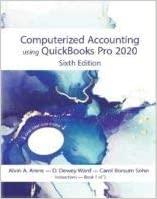Question
Risk Assessment and Management in Managerial Auditing Risk assessment and management are integral components of managerial auditing, aimed at identifying, evaluating, and mitigating risks that
Risk Assessment and Management in Managerial Auditing
Risk assessment and management are integral components of managerial auditing, aimed at identifying, evaluating, and mitigating risks that may impact organizational objectives. Here's a detailed overview of the steps involved in risk assessment and management within the context of managerial auditing:
1. Identify Risks:
The first step in risk assessment is to identify potential risks that could affect the achievement of organizational goals. Risks may arise from various sources, including internal processes, external factors, regulatory changes, and technological developments.
Internal auditors work closely with management and key stakeholders to identify and document risks across different areas of the organization, such as operations, finance, compliance, and strategic planning.
2. Analyze Risks:
Once risks are identified, they are analyzed to assess their likelihood and potential impact on the organization. This involves evaluating the probability of occurrence and the magnitude of the consequences associated with each risk.
Risk analysis techniques, such as risk matrices, scenario analysis, and sensitivity analysis, may be used to quantify and prioritize risks based on their severity and significance.
3. Evaluate Controls:
After identifying and analyzing risks, the effectiveness of existing controls is evaluated to determine their ability to mitigate identified risks. Controls may include policies, procedures, internal controls, and risk management practices.
Internal auditors assess the design and operating effectiveness of controls to identify weaknesses or gaps that could expose the organization to risk.
4. Develop Risk Response Strategies:
Based on the results of risk assessment and control evaluation, appropriate risk response strategies are developed to address identified risks. These strategies may include risk avoidance, risk mitigation, risk transfer, or risk acceptance.
Management collaborates with internal auditors to develop action plans and implementation strategies to strengthen controls and reduce the likelihood and impact of risks.
5. Monitor and Review:
Risk management is an ongoing process that requires continuous monitoring and review. Internal auditors monitor the effectiveness of risk response strategies and control measures, and periodically reassess risks in light of changing circumstances.
Regular reviews and updates to the risk management framework ensure that the organization remains responsive to emerging risks and evolving business conditions.
Case Study: ABC Corporation
Background: ABC Corporation is a global manufacturing company facing increasing competition and market volatility. To address these challenges, the company implemented a comprehensive risk management program as part of its managerial auditing practices.
Steps in Risk Assessment and Management:
Identify Risks: ABC Corporation conducted risk workshops and brainstorming sessions involving key stakeholders to identify potential risks across various business functions, including supply chain management, production, finance, and marketing.
Analyze Risks: The identified risks were analyzed using quantitative and qualitative methods to assess their likelihood and potential impact on business objectives. Risk ratings were assigned based on the severity of consequences and the likelihood of occurrence.
Evaluate Controls: Internal auditors conducted control assessments to evaluate the effectiveness of existing risk mitigation measures and internal controls. Weaknesses in controls were identified, and recommendations were made to strengthen control environments.
Develop Risk Response Strategies: Based on the results of risk assessments and control evaluations, ABC Corporation developed risk response strategies tailored to address specific risks. This included implementing additional controls, diversifying supply chain sources, and hedging against market fluctuations.
Monitor and Review: The risk management program was continuously monitored and reviewed to ensure its effectiveness and relevance. Key risk indicators were tracked, and regular reports were provided to senior management and the board of directors to facilitate informed decision-making.
Question:
In risk assessment and management, the first step is to _____________ potential risks that could impact organizational objectives.
A) ignore B) identify C) mitigate D) escalate
Step by Step Solution
There are 3 Steps involved in it
Step: 1

Get Instant Access to Expert-Tailored Solutions
See step-by-step solutions with expert insights and AI powered tools for academic success
Step: 2

Step: 3

Ace Your Homework with AI
Get the answers you need in no time with our AI-driven, step-by-step assistance
Get Started


